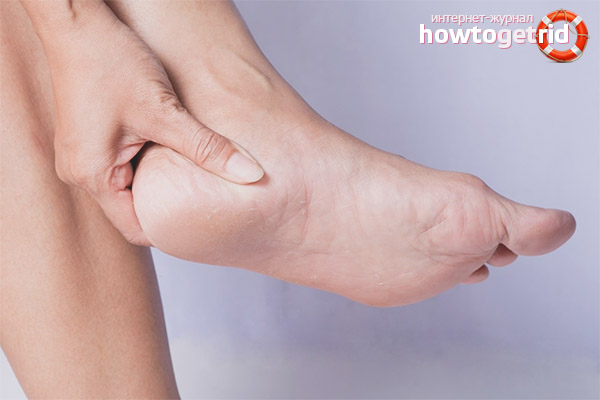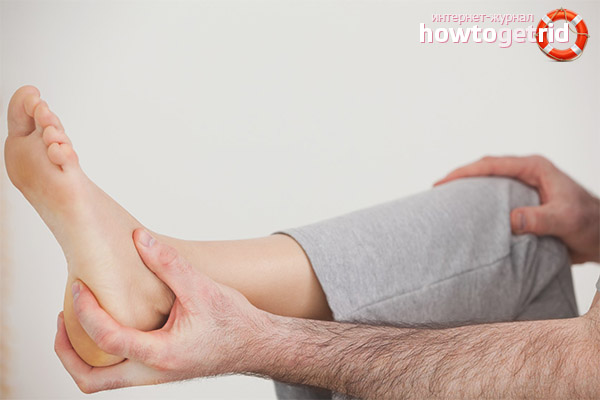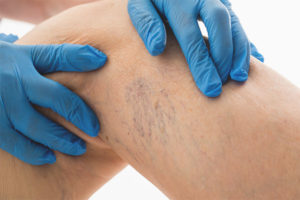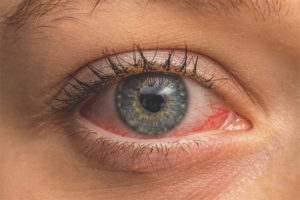The content of the article
Heel bruise is a fairly common injury that can happen to anyone. In fact, a bruise is damage to the soft tissues, without violating the integrity of the bones. Bruised heels usually form after an unsuccessful jump from a serious height. Very often, such injuries occur in adolescents who like to jump from garages and other elevations. Injuries to the heel often occur in parkour - people who overcome obstacles in an urban environment. A similar injury is not uncommon for women who are used to constantly walking in heels. In this article, we’ll talk about heel bruise - how it manifests itself, whether it is possible to independently distinguish a bruise from a heel fracture and how to treat soft tissue damage at home.
How to recognize heel injury
After an unsuccessful landing, heel pain will tell you about getting a serious injury. What symptoms indicate heel injury?
A few hours after receiving an injury, a hematoma will appear on the calcaneal region. As a rule, with a bruised heel, the integrity of the skin is not violated, but the internal hemorrhage is quite serious. This is due to the large number of blood vessels in this area. If there is no visible hematoma, and the pain in the heel is unbearable, most likely the bone is damaged - you need to immediately go to the emergency room.
In the place of violation of the integrity of tissues, edema may appear. In some cases, it can be so large that the foot does not fit in the usual shoes. If separate local cones are formed, this most often indicates the neglect of the process.
As you know, in the feet there are a large number of active points and nerve endings. That is why pain with a bruised heel is felt so sharply - this is due to compression of the nerve endings, filling of the damaged internal tissues with blood, etc.
All these signs may indicate a bruised heel, but is it possible to distinguish a bruise from a fracture on your own?
How to distinguish a bruise from a calcaneus fracture
The biggest danger of heel injury is that it can be not just a bruise, but a fracture of the calcaneus. It is almost impossible to distinguish one from another independently. Bruising pain is very acute at first, but then gradually subsides, becoming pulsating or aching. But with a fracture, on the contrary, the pain only intensifies over time, the swelling increases, with every hour it becomes more and more difficult to endure discomfort. However, this may not be the universal way to determine a bruise or fracture. The pain threshold is different for everyone, for some it’s very difficult to bear the bruise, and someone with a fracture continues to walk to work on foot. The only sure way to determine the nature of the injury is to take an x-ray, which will clearly show the destruction of the bone, if any. By the way, the intensity of damage and contusion cannot be judged by the size and color of the hematoma - it depends on the fragility of the blood vessels. For example, in older people, the vessels are very fragile, even a slight bruise leads to large bruises.
Immediately after receiving an injury, it is very important to provide first aid. You need to lie down in a horizontal position, put a pillow or other elevation under your foot, which will help raise the heel above the level of the rest of the body. This technique will help to avoid severe hematoma and swelling. As soon as possible, you need to apply a cold to the sore spot - pieces of ice, frozen meat, you can use a cold bottle from the kiosk on the street. With severe pain, you can take a pill of an analgesic, which is at hand.As soon as the first pain shock has passed, you need to go to the doctor to take a picture, and then exclude or confirm a calcaneus fracture. Remember that all home therapeutic measures are permissible only after you are sure that you have a bruise. After all, the consequences and complications of a fracture are much more serious.
How to treat heel injury
As a rule, a bruise does not require any special measures, the body is able to cope with the injury on its own, only time and peace are needed. Try not to strain your heel and give up walking for a while. The entire treatment of the bruise is aimed at relieving inflammation, reducing pain, accelerating tissue regeneration.
- Cold is warm. In the first days after the injury, you should most actively apply cold to the bruise - any frozen foods, ice wrapped in a towel, etc. Cold constricts blood vessels and prevents the spread of blood inside damaged tissues. And already 24 hours after the injury, heat should be applied to the site of the injury - it will help the hematoma resolve faster.
- Drug treatment. Drug treatment is aimed at the speedy healing of damaged tissues. In the fight against edema and hematoma, you can use such drugs as Levomekol, Dolobene, Dimexide. Lyoton, Heparin ointment, Venolife possesses excellent resolving properties. Medications can simply be rubbed with neat, painless movements, left on the heel or a lotion, fixing the ointment with a special bandage. You can alternate between active drugs to get a faster healing effect.
- Baths. This is a great way to relieve inflammation and reduce swelling. It is best to make warm baths with the addition of sea salt. Salt draws excess fluid from the tissues, allowing you to quickly get rid of swelling. Try to do baths before bedtime to give your heel absolute peace after the procedure. After taking the bath, you need to thoroughly dry your legs, apply an anti-inflammatory ointment, cover with a film on top and fix with a bandage. This will help tissues recover faster and prolong therapy overnight.
- Physiotherapeutic procedures. Usually they are prescribed only with severe bruises or in neglect, when the injury does not heal for a long time. It is very useful to treat magnetic fields, phonophoresis, ultrasound. All these measures in different ways stimulate increased blood circulation in the tissues, have an anti-inflammatory effect, accelerate the resorption of the hematoma, and relieve swelling.
- Elastic bandage. In the first few days after injury, you must use an elastic bandage or other tight bandage. It is necessary to wear it constantly in between treatments and other therapeutic measures. This will allow tissues and tendons to recover faster, moreover, a tight bandage protects the foot from undesirable loads.
If the injury is minor, you will not fall out of life for a long time - the bruise will pass in just a few days. Especially if you accelerate recovery with folk remedies.
How to treat heel injury at home
Here are some more folk tips and tricks that will help you relieve inflammation and swelling, as soon as possible return to an active life.
- Boric or camphor alcohol. Rub boron or camphor alcohol into a bruised leg; these compounds warm up tissues perfectly and promote resorption of hematomas.
- Bodyagi. This is an excellent remedy for edema and bruising. Plant-based powder should be dissolved in a small amount of water and rubbed into the foot, the improvement will be noticeable after the first application.
- Cabbage. Cabbage leaf will help if there are seals or internal blood clots at the site of the bruise.A large sheet should be rolled out on a board with a rolling pin, softened, applied to a sore heel and fixed with an elastic bandage.
- Wormwood and oak bark. Both of these components have excellent healing properties - wormwood relieves swelling and inflammation, oak bark anesthetizes and stimulates tissue regeneration. Pour two tablespoons of chopped oak bark and wormwood into a glass jar, pour boiling water, let it brew for a couple of hours. From the prepared broth, you can make warm baths or apply lotions to the heel.
- Vodka compress. Alcohol lotions perfectly cope with internal bruises and inflammations, perfectly absorb hematomas. You just need to moisten a piece of bandage or clean cloth in vodka, place it on the heel, wrap it with a film so that the alcohol does not evaporate, and fix it with a bandage. Shoot no earlier than a couple of hours.
- Potatoes. It is widely believed that potato starch pulls inflammation to the outside, that is, it "takes everything upon itself." Therefore, with bruises from potato pulp, medicinal lotions are often made. Boil the potatoes in their skins, crush to a puree state, add a little oil (so that the potatoes do not cool down for a long time) and put the gruel on the heel, fix it with a film and a bandage. Instead of potatoes, you can use regular starch. Mashed potatoes not only relieve inflammation, but also retain heat for a long time, which helps get rid of edema.
Sometimes the problem is not the injury itself, but its appearance - who will like the huge blue spots on the leg? This is especially worrying for women in the summer - I want to quickly return to my favorite sandals and sandals. In this case, you need to grate horseradish and radish on a grater, mix and apply the pulp to the damaged tissues, fix it with a bandage and do not remove it for about a day. Pulp vegetable juice can be added to the bath.
Our simple tips and recipes will help you speed recovery. If you act competently and comprehensively, even the most serious injury will pass in a week, and you can again return to normal life and a healthy walk!
Video: how to cure foot and heel pain











Submit